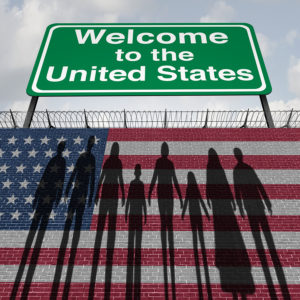COVID-19 has upended many assumptions about the American and world economies.
Amid the crisis, American healthcare has seen some astonishingly positive moves. It would be unfortunate to undermine that progress by shrinking the availability of immigrant workers or limiting how they can contribute to healthcare and other sectors.
In recent weeks, federal and state governments have officially or unofficially loosened numerous harmful laws and regulations. Doctors suddenly have greater leeway to cross state borders, physically and via telemedicine. Physicians and other providers have greater capacity to practice to the top of their training.
Telemedicine is welcomed and practiced to an unprecedented degree. Some states have ceased requiring hospitals to beg for permission to spend their own money to add beds or equipment. The Food and Drug Administration has expedited approval of goods and services.
All these changes are welcome. Their common theme is increasing the supply of health care resources and allowing broader use of those resources.
But in one policy area — immigration — the COVID-19 aftershocks may go in the opposite direction. On April 22, President Trump signed a proclamation suspending green cards for certain categories of immigrants for 60 days.
This proclamation is a blend of good news, no news and bad news.
The good news part is that amid this deadly contagion, the proclamation specifically exempts healthcare workers and immediate family members of U.S. citizens.
The no news part is that, practically speaking, the proclamation doesn’t have much effect overall.
The near total shutdown of visa processing by U.S. embassies and consular offices; of the U.S. Citizenship and Immigration Service; and of non-essential travel from Canada, Mexico and much of Asia and Europe had already reduced immigration to a trickle. (Of course, suspending green cards has enormous effects on individual applicants.)
The bad news part is that the proclamation did symbolically clamp down on immigration and promulgate the notion that this somehow helps the American economy.
It’s good that the proclamation effectively recognized the critical importance of immigrants to American healthcare.
A 2018 Journal of the American Medical Association survey showed that 29 percent of U.S. physicians and 16 percent of registered nurses were foreign-born, with similar numbers among other health professionals.
According to the Cato Institute’s David Bier (based on U.S. government statistics), nearly 1.7 million foreign born medical and healthcare workers are caring for COVID-19 patients, with foreign born individuals accounting for nearly 40 percent of the medical and life scientists in the United States aiding in research for coronavirus cures and treatments.
But the president’s words imply that restricting immigration would somehow benefit American workers or public health. Neither seems accurate.
Economic studies confirm that immigrants tend to complement rather than displace U.S. workers — exerting a neutral-to-positive effect on wages of most workers and negligible overall effects on unemployment. As the U.S. economy reopens, immigrants will play important roles in reviving key sectors like retail, hospitality, agriculture, transportation and construction.
A recent Cato Institute analysis found no correlation between the share of foreign born in a U.S. county and the presence of COVID-19 (adjusted for population density). The main battle right now involves slowing the spread of the virus domestically.
The U.S. government should certainly screen incoming foreign nationals for virus symptoms, but that’s not the same as banning their entry entirely.
Perhaps the most discouraging aspect of the April 22 proclamation is the president’s complaint that green card holders can move about freely among employers. In fact, that sort of flexibility is exactly what our economy needs as demands for food, healthcare and other items shift about by product and geography.
The U.S. government should resist anti-immigration tendencies.
Encouragingly, the governors of New York and New Jersey recently granted more flexibility in where foreign trained doctors can work. The federal government should follow that example by allowing medical professionals with temporary H-1B visas (which tie the worker to a single employer) to shift between hospitals as COVID-19 outbreaks move from place to place.
As COVID-19 has metastasized since February, governments across America have, to an impressive degree, signaled that they understand the importance of ramping up resources and deploying them where they are most needed.
That logic applies to people and knows no borders.

